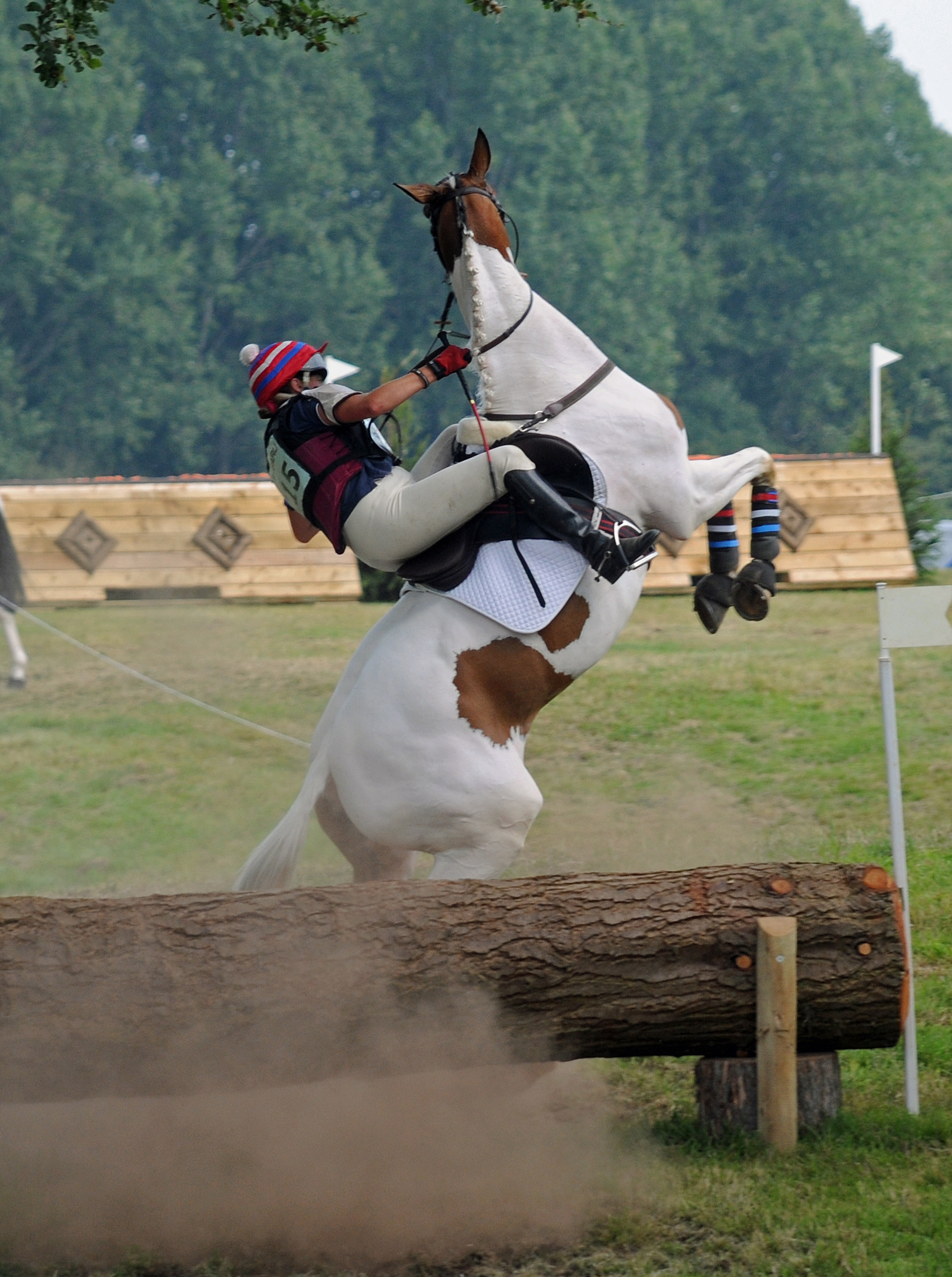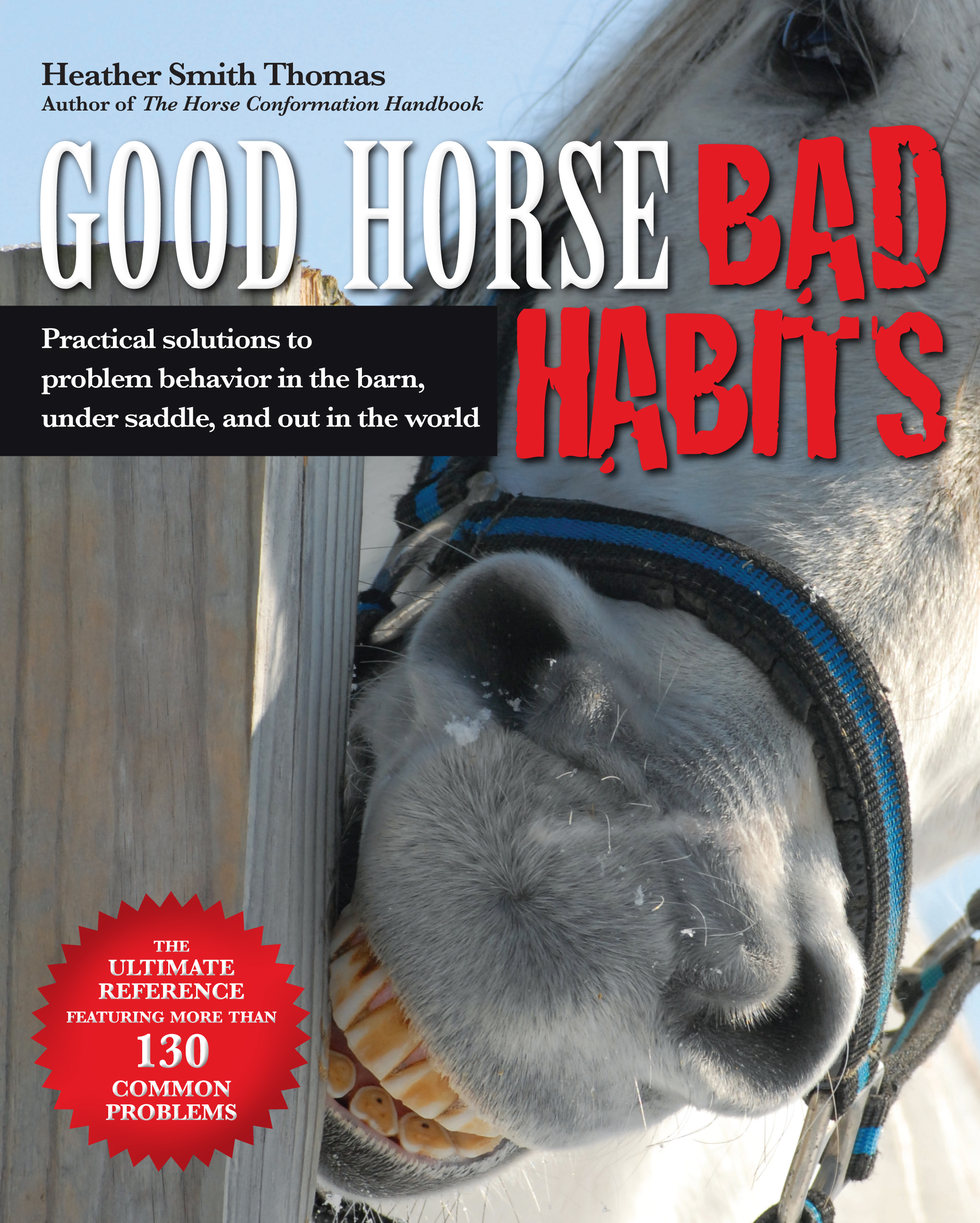This excerpt from Good Horse, Bad Habits by Heather Smith Thomas is reprinted with permission from Trafalgar Square Books (www.horseandriderbooks.com).
In this excerpt from her book Good Horses, Bad Habits, lifetime horsewoman Heather Smith Thomas provides 5 ways to put a stop to the rearing habit.
Rearing is one of the most dangerous habits a horse can develop. Shying or bucking may result in a rider parting company with the horse and landing on the ground, but a tumble off is not as risky as having the horse go over backward and fall on top of you.
How to Change This Bad Habit
1. First make sure there isn’t a physical or equipment problem causing the horse to rear in an attempt to avoid pain. If his mouth hurts when you use the bit (because of an ill-fitting or severe bit, a too-tight curb chain, or a dental problem, for example) he may rear when you pull on the reins. If the saddle pinches him or his back hurts because of stiffness or injury, he may rear when you ask him to move forward. When a horse starts rearing you should try to determine the reason before attempting to deal with the bad behavior.

Photo by John Harwood/CC
2. If the horse rears because he’s afraid—as an avoidance tactic when asked to approach something strange or unfamiliar—he needs patient training to get him over his fear. If he rears when you try to approach a “scary” obstacle, for instance, go back to basics and do groundwork, revisiting cues in hand and then using advance and retreat to eventually get closer to the obstacle without him making a fuss. Once you have worked him through his phobia on the ground, you can again try riding him up to, around, and/or over the obstacle. Have another rider on a calm horse approach the obstacle first to give your horse a feeling of security. Rearing always begins as a defense against a stressful situation. If you can reduce or remove the stress, you will reduce or eliminate his inclination to rear.
3. Rearing may be caused by confusion. If you give a horse conflicting aids, such as kicking or squeezing with the legs and at the same time pulling on the reins, the horse may rear. This can be prevented by improving your riding skills through lessons, study, and practice.
4. Some horses rear to avoid bit control. They often learn this trick because a rider pulls too much (hurting the horse’s mouth) or rushes him in training and overbits him. If your horse starts rearing and you’ve been riding in anything other than a snaffle, examine your riding skills—don’t just automatically blame the horse. Take a few steps back, use a milder bit, revisit earlier training, and don’t ask him for more advanced work until he is ready and your rein, leg, and seat cues have been improved.
5. Some horses rear in protest when the rider asks too much of them, pushing them beyond their physical, emotional, or mental abilities. A horse may also rear in an attempt to get his way and run back to the barn or his buddies when the rider tries to make him go somewhere he doesn’t want to go or do something he doesn’t want to do. If this becomes a habit, the horse may rear whenever he’s frustrated or upset.
When rearing is already a habit, work on some specific lessons for keeping control. Remember it’s impossible for him to rear unless he’s standing still or moving backward (able to plant all his weight on his hind legs). It takes more physical effort to rear (raising his weight and yours) than to move forward. Devising ways of keeping the horse going forward keeps you in control. Work on fine-tuning his response to leg, seat, and rein cues so you can always urge him forward when he balks, and you can prevent a rear.
Teach the horse an alternative movement that you can ask for whenever you think he’s about to rear. This does two things: It redirects his energy into a more acceptable action and also puts him into a physical position that makes it impossible for him to rear. For instance, you can teach him a turn on the forehand where he swings his hindquarters around while his front feet remain almost in place. This maneuver puts his weight more forward, on his front end, and that helps keep them on the ground. You can teach the horse this maneuver from the ground first:
• Stand at the horse’s shoulder and hold his head with a firm but relaxed hand to encourage his front feet to stay in place.
• Ask the horse to move his hind legs away from you by press on his side with your hand, at about the same position your leg would be if you were mounted.
• Pull his head slightly toward you to keep him from moving his front legs as you press on his side. Ask for one step at a time, and release the pressure when he reacts by crossing one hind leg over the other and moving his hindquarters away.
• Repeat until the horse is standing in the same spot (with this front feet), but facing the opposite direction (or you can ask him to complete a full circle so you end in the same position you started).
• Do this from both sides on the ground. Then practice under saddle. When asking him to pivot on his front legs from the saddle, use your reins to cue him lightly with the bit, bending his head and neck slightly away (in the opposite direction) from the direction his hindquarters are moving. Thus your hands are holding his front end relatively still while your leg pushes his hindquarters over—press and release with the leg as you did with the pressure from the ground.
• Ask for one step at a time, coordinating your leg and rein cues so he treads a smooth semicircle (or full circle, if you want to keep him busy for longer) with his hind legs while keeping his front feet in the same spot and maintaining a feeling of forward impulsion. You can ensure he continues to “think forward” by asking him to walk on immediately following completion of the pivot. Once the horse learns to give instant response to your leg cue—swinging his hind end one way or the other upon request—you can ask for a turn on the forehand whenever you think he might be inclined to rear. In this way you keep his trust and cooperation (without fighting him) and substitute an acceptable action for a dangerous one.

Pick up your copy of the Good Horse, Bad Habits from Trafalgar Square Books HERE!
